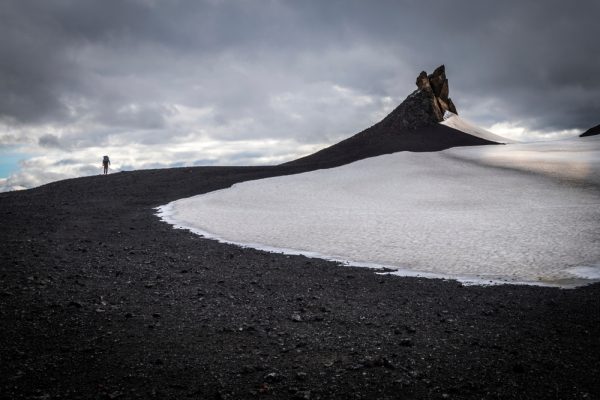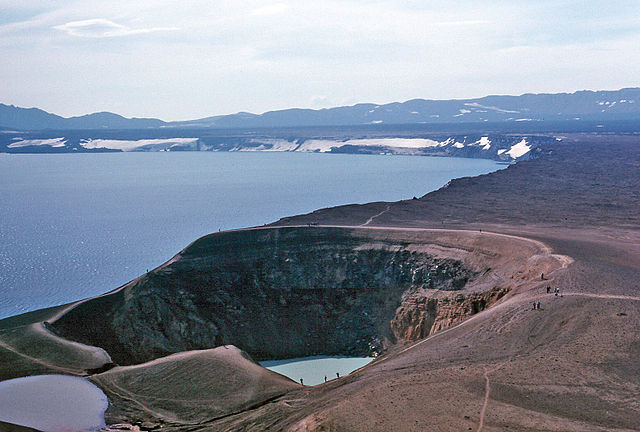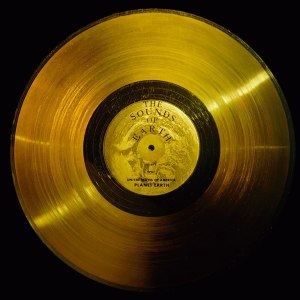Arndt, N. T., and Nisbet, E. G. 2012. Processes on the young Earth and the habitats of early life. Annual Review of Earth and Planetary Sciences, 40: 521-549.
Aubert et al. 2015. Long-term Evolution…Magnetic Field
Bekker and Holland 2012 Oxygen overshoot (Abstract only)
Beraldi-Campesi, H. 2013. Early life on land and the first terrestrial ecosystems. Ecological Processes, 2(1): 1-17.
Bernstein, H.; Byers, G. S.; and Michod, R. E. 1981. Evolution of sexual reproduction: importance of DNA repair, complementation, and variation. The American Naturalist, 117(4): 537-549.
Black, B. A.; Karlstrom, L.; and Mather, T. A. 2021. The life cycle of large igneous provinces. Nature Reviews Earth & Environment, 2(12): 840-857.
Black, B.; Mittal, T.; Lingo, F.; Walowski, K.; and Hernandez, A. 2021a. Assessing the environmental consequences of the generation and alteration of mafic volcaniclastic deposits during large igneous province emplacement. Large Igneous Provinces: A Driver of Global Environmental and Biotic Changes, 117-131. https://agupubs.onlinelibrary.wiley.com/doi/10.1002/9781119507444.ch5
Bleeker, W. 2003. The late Archean record: a puzzle in ca. 35 pieces. Lithos, 71(2-4): 99-134.
Bond, D. P., and Sun, Y. 2021. Global Warming and Mass Extinctions Associated With Large Igneous Province Volcanism. Large Igneous Provinces: A Driver of Global Environmental and Biotic Changes, 83-102. https://agupubs.onlinelibrary.wiley.com/doi/10.1002/9781119507444.ch3
Bowman, J. C.; Petrov, A. S.; Frenkel-Pinter, M.; Penev, P. I.; and Williams, L. D. 2020. Root of the tree: the significance, evolution, and origins of the ribosome. (Abstract only.) Chemical Reviews, 120(11): 4848-4878.
Bowyer, F.; Wood, R. A.; and Poulton, S. W. 2017. Controls on the evolution of Ediacaran metazoan ecosystems: a redox perspective. Geobiology, 15(4): 516-551.
Bradley, D. C. 2011. Secular trends in the geologic record and the supercontinent cycle. Earth-Science Reviews, 108(1-2): 16-33.
Brown, J. H.; Gillooly, J. F.; Allen, A. P.; Savage, V. M.; and West, G. B. 2004. Toward a metabolic theory of ecology. Ecology, 85(7): 1771-1789.
Bryan, S. E., and Ernst, R. E. 2008. Revised definition of large igneous provinces (LIPs). Earth-Science Reviews, 86(1-4): 175-202.
Burford, E. P.; Fomina, M.; and Gadd, G. M. 2003. Fungal involvement in bioweathering and biotransformation of rocks and minerals. Mineralogical Magazine, 67(6): 1127-1155.
Butterfield, N. J. 2000. Bangiomorpha pubescens n. gen., n. sp.: implications for the evolution of sex, multicellularity, and the Mesoproterozoic/Neoproterozoic radiation of eukaryotes. Paleobiology, 26(3): 386-404.
Campbell, I. H., and Allen, C. M. 2008. Formation of supercontinents linked to increases in atmospheric oxygen. Nature Geoscience, 1(8): 554-558.
Carlson, R. W.; Garçon, M.; O’neil, J.; Reimink, J.; and Rizo, H. 2019. The nature of Earth’s first crust. Chemical Geology, 530: 119321.
Catling, D. C., and Zahnle, K. J. 2020. The Archean atmosphere. Science Advances, 6(9): eaax1420. https://www.science.org/doi/10.1126/sciadv.aax1420
Condie, K. C., and O’Neill, C. 2010. The Archean-Proterozoic boundary: 500 My of tectonic transition in Earth history. American Journal of Science, 310(9): 775-790.
Corsetti, F. A.; Olcott, A. N.; and Bakermans, C. 2006. The biotic response to Neoproterozoic snowball Earth. Palaeogeography, Palaeoclimatology, Palaeoecology, 232(2-4): 114-130.
Dang, Z., Zhang, N., Li, Z. X., Huang, C., Spencer, C. J., & Liu, Y. (2020). Weak orogenic lithosphere guides the pattern of plume-triggered supercontinent break-up. Communications Earth & Environment, 1(1), 1-11.
https://www.nature.com/articles/s43247-020-00052-z
David, V. A.; Menotti-Raymond, M.; Wallace, A. C.; Roelke, M.; and others. 2014. Endogenous retrovirus insertion in the KIT oncogene determines white and white spotting in domestic cats. G3: Genes, Genomes, Genetics, g3-114.
Diamond, C. W.; Ernst, R. E.; Zhang, S. H.; and Lyons, T. W. 2021. Breaking the Boring Billion: A Case for Solid‐Earth Processes as Drivers of System‐Scale Environmental Variability During the Mid‐Proterozoic. Large Igneous Provinces: A Driver of Global Environmental and Biotic Changes, 487-501.
Doolittle, W. F., and Brown, J. R. 1994. Tempo, mode, the progenote, and the universal root. Proceedings of the National Academy of Sciences, 91(15), 6721-6728.
Droser, M. L., and Gehling, J. G. 2015. The advent of animals: the view from the Ediacaran. Proceedings of the National Academy of Sciences, 112(16): 4865-4870.
Dunn, F. S.; Liu, A. G.; and Donoghue, P. C. 2018. Ediacaran developmental biology. Biological Reviews, 93(2): 914-932.
Durzyńska, J., and Goździcka-Józefiak, A. (2015). Viruses and cells intertwined since the dawn of evolution. Virology journal, 12(1), 1-10.
El Albani, A.; Bengtson, S.; Canfield, D. E.; Riboulleau, A.; and others. 2014. The 2.1 Ga old Francevillian biota: biogenicity, taphonomy and biodiversity. PLoS One, 9(6): e99438.
Endres, R. G. 2017. Entropy production selects nonequilibrium states in multistable systems. Scientific Reports, 7(1): 1-13.
Ernst, R. E., and Youbi, N. 2017. How Large Igneous Provinces affect global climate, sometimes cause mass extinctions, and represent natural markers in the geological record. Palaeogeography, Palaeoclimatology, Palaeoecology, 478: 30-52.
Ernst, R. E.; Wingate, M. T. D.; Buchan, K. L.; and Li, Z. X. 2008. Global record of 1600–700 Ma Large Igneous Provinces (LIPs): implications for the reconstruction of the proposed Nuna (Columbia) and Rodinia supercontinents. Precambrian Research, 160(1-2): 159-178.
Ernst, R. E.; Bleeker, W.; Söderlund, U.; and Kerr, A. C. 2013. Large igneous provinces and supercontinents: Toward completing the plate tectonic revolution. Lithos, 174: 1-14.
Ernst, R. E.; Bond, D. P.; Zhang, S. H.; Buchan, K. L.; and others. 2021. Large Igneous Province Record Through Time and Implications for Secular Environmental Changes and Geological Time‐Scale Boundaries. Large Igneous Provinces: A Driver of Global Environmental and Biotic Changes, 1-26.
Ernst, W. G. 2009. Archean plate tectonics, rise of Proterozoic supercontinentality and onset of regional, episodic stagnant-lid behavior. Gondwana Research, 15(3-4): 243-253.
Evans, D. A., and Mitchell, R. N. 2011. Assembly and breakup of the core of Paleoproterozoic–Mesoproterozoic supercontinent Nuna. Geology, 39(5): 443-446.
Fedonkin, M. A. 2003. The origin of the Metazoa in the light of the Proterozoic fossil record. Paleontological Research, 7(1): 9-41.
Finke, N.; Simister, R. L.; O’Neil, A. H.; Nomosatryo, S.; and others. 2019. Mesophilic microorganisms build terrestrial mats analogous to Precambrian microbial jungles. Nature Communications, 10(1): 1-11.
Fiorentini, M. L.; O’Neill, C.; Giuliani, A.; Choi, E.; and others. 2020. Bushveld superplume drove Proterozoic magmatism and metallogenesis in Australia. Scientific Reports, 10(1): 1-10.
Foley, B. J., and Driscoll, P. E. 2016. Whole planet coupling between climate, mantle, and core: Implications for rocky planet evolution. Geochemistry, Geophysics, Geosystems, 17(5): 1885-1914.
Fox, G. E. 2010. Origin and evolution of the ribosome. Cold Spring Harbor Perspectives in Biology, 2(9), a003483.
Gan, Z.; Yan, Y.; and Qi, Y. 2004. Entropy budget of the earth, atmosphere and ocean system. Progress in Natural Science, 14(12): 1088-1094.
Genikhovich, G., and Technau, U. 2017. On the evolution of bilaterality. Development, 144(19): 3392-3404.
Goldblatt, C.; Lenton, T. M.; and Watson, A. J. 2006. Bistability of atmospheric oxygen and the Great Oxidation. Nature, 443(7112): 683-686.
Gradstein, F. M.; Ogg, J. G.; and Hilgen, F. G. 2012. On the geologic time scale. Newsletters on Stratigraphy. 45(2):171-188.
Grieve, R., and Therriault, A. 2000. Vredefort, Sudbury, Chicxulub: three of a kind?. Annual Review of Earth and Planetary Sciences, 28(1): 305-338.
Gutteridge, J. M., and Halliwell, B. 2018. Mini-review: oxidative stress, redox stress or redox success?. Biochemical and biophysical research communications, 502(2): 183-186.
Hazen, R. M.; Papineau, D.; Bleeker, W.; Downs, R. T.; and others. 2008. Mineral evolution. American Mineralogist, 93(11-12): 1693-1720.
Hoffman, P. F.; Abbot, D. S.; Ashkenazy, Y.; Benn, D. I.; and others. 2017. Snowball Earth climate dynamics and Cryogenian geology-geobiology. Science Advances, 3(11): e1600983.
Hohmann-Marriott, M. F., and Blankenship, R. E. 2011. Evolution of photosynthesis. Annual Review of Plant Biology, 62: 515-548.
Hou, X., and Bergström, J. 2003. The Chengjiang fauna—the oldest preserved animal community. Paleontological Research, 7(1): 55-70.
Hsia, C. C.; Schmitz, A.; Lambertz, M.; Perry, S. F.; and Maina, J. N. 2013. Evolution of air breathing: oxygen homeostasis and the transitions from water to land and sky. Comprehensive Physiology, 3(2): 849.
Huston, D. L.; Pehrsson, S.; Eglington, B. M.; and Zaw, K. 2010. The geology and metallogeny of volcanic-hosted massive sulfide deposits: Variations through geologic time and with tectonic setting. Economic Geology, 105(3): 571-591.
Jahren, A. H. 2002. The biogeochemical consequences of the mid-Cretaceous superplume. Journal of Geodynamics, 34(2): 177-191.
Javaux, E. J., and Lepot, K. 2018. The Paleoproterozoic fossil record: implications for the evolution of the biosphere during Earth’s middle-age. Earth-Science Reviews, 176: 68-86.
Johansson, Å.; Bingen, B.; Huhma, H.; Waight, T.; and others. 2022. A geochronological review of magmatism along the external margin of Columbia and in the Grenville-age orogens forming the core of Rodinia. Precambrian Research, 371: 106463.
Kasting, J. F. 2019. The Goldilocks planet? How silicate weathering maintains Earth “just right”. Elements: An International Magazine of Mineralogy, Geochemistry, and Petrology, 15(4): 235-240.
Keller, C. B.; Husson, J. M.; Mitchell, R. N.; Bottke, W. F.; and others. 2019. Neoproterozoic glacial origin of the Great Unconformity. Proceedings of the National Academy of Sciences, 116(4): 1136-1145.
Keller, G. 2005. Impacts, volcanism and mass extinction: random coincidence or cause and effect?. Australian Journal of Earth Sciences, 52(4-5): 725-757.
Keller, G. 2008. Cretaceous climate, volcanism, impacts, and biotic effects. Cretaceous Research, 29(5-6): 754-771.
Kenrick, P., and Crane, P. R. 1997. The origin and early evolution of plants on land. Nature, 389(6646): 33-39.
Kharecha, P.; Kasting, J.; and Siefert, J. 2005. A coupled atmosphere–ecosystem model of the early Archean Earth. Geobiology, 3(2): 53-76.
Kitadai, N., and Maruyama, S. 2018. Origins of building blocks of life: A review. Geoscience Frontiers, 9(4): 1117-1153.
Klatt, J. M.; Chennu, A.; Arbic, B. K.; Biddanda, B. A.; and Dick, G. J. 2021. Possible link between Earth’s rotation rate and oxygenation. Nature Geoscience, 14(8): 564-570.
Kleidon, A. 2010. A basic introduction to the thermodynamics of the Earth system far from equilibrium and maximum entropy production. Philosophical Transactions of the Royal Society B: Biological Sciences, 365(1545): 1303-1315. https://www.ncbi.nlm.nih.gov/pmc/articles/PMC2871909/
Knoll, A. H. 2003. Biomineralization and evolutionary history. Reviews in Mineralogy and Geochemistry, 54(1): 329-356.
___. 2014. Paleobiological perspectives on early eukaryotic evolution. Cold Spring Harbor Perspectives in Biology, 6(1): a016121.
Koonin, E. V. 2010. The origin and early evolution of eukaryotes in the light of phylogenomics. Genome Biology, 11(5): 1-12.
Kopp, R. E.; Kirschvink, J. L.; Hilburn, I. A.; and Nash, C. Z. 2005. The Paleoproterozoic snowball Earth: a climate disaster triggered by the evolution of oxygenic photosynthesis. Proceedings of the National Academy of Sciences, 102(32): 11131-11136.
Korenaga, J. 2006. Archean geodynamics and the thermal evolution of Earth. Geophysical Monograph-American Geophysical Union, 164: 7.
Korenaga, J.; Planavsky, N. J.; and Evans, D. A. 2017. Global water cycle and the coevolution of the Earth’s interior and surface environment. Philosophical Transactions of the Royal Society A: Mathematical, Physical and Engineering Sciences, 375(2094): 20150393.
Krupovic, M.; Dolja, V. V., and Koonin, E. V. 2020. The LUCA and its complex virome. Nature Reviews Microbiology, 18(11): 661-670.
Lemons, D., and McGinnis, W. 2006. Genomic evolution of Hox gene clusters. Science, 313(5795): 1918-1922.
Li, Z. X.; Evans, D. A.; and Halverson, G. P. 2013. Neoproterozoic glaciations in a revised global palaeogeography from the breakup of Rodinia to the assembly of Gondwanaland. Sedimentary Geology, 294: 219-232.
Lindsay, J. F., and Brasier, M. D. 2002. Did global tectonics drive early biosphere evolution? Carbon isotope record from 2.6 to 1.9 Ga carbonates of Western Australian basins. Precambrian Research, 114(1-2): 1-34.
Liu, J.; Xia, Q. K.; Kuritani, T.; Hanski, E.; and Yu, H. R. 2017. Mantle hydration and the role of water in the generation of large igneous provinces. Nature Communications, 8(1): 1-8.
Lubnina, N. V., and Slabunov, A. I. 2011. Reconstruction of the Kenorland supercontinent in the Neoarchean based on paleomagnetic and geological data. Moscow University Geology Bulletin, 66(4): 242-249.
Maizels, N., and Weiner, A. M. 1994. Phylogeny from function: evidence from the molecular fossil record that tRNA originated in replication, not translation. Proceedings of the National Academy of Sciences, 91(15), 6729-6734.
Maruyama, S.; Santosh, M.; and Zhao, D. 2007. Superplume, supercontinent, and post-perovskite: mantle dynamics and anti-plate tectonics on the core–mantle boundary. Gondwana Research, 11(1-2): 7-37.
Maruyama, S.; Ikoma, M.; Genda, H.; Hirose, K.; and others. 2013. The naked planet Earth: most essential pre-requisite for the origin and evolution of life. Geoscience Frontiers, 4(2): 141-165.
Mather, T. A., and Schmidt, A. 2021. Environmental effects of volcanic volatile fluxes from subaerial large igneous provinces. Large Igneous Provinces: A Driver of Global Environmental and Biotic Changes, 103-116. https://agupubs.onlinelibrary.wiley.com/doi/10.1002/9781119507444.ch4
Mazumder, R., and Arima, M. 2005. Tidal rhythmites and their implications. Earth-Science Reviews, 69(1-2): 79-95.
McNamara, A. K. 2019. A review of large low shear velocity provinces and ultra low velocity zones. Tectonophysics, 760: 199-220.
Meert, J. G. 2012. What’s in a name? The Columbia (Paleopangaea/Nuna) supercontinent. Gondwana Research, 21(4), 987-993.
Meert, J. G., and Santosh, M. 2017. The Columbia supercontinent revisited. Gondwana Research, 50: 67-83.
Moczydłowska, M. 2008. The Ediacaran microbiota and the survival of Snowball Earth conditions. Precambrian Research, 167(1-2): 1-15.
Morton, M. C. 2017. When and how did plate tectonics begin on Earth? https://www.earthmagazine.org/article/when-and-how-did-plate-tectonics-begin-earth/
Mukherjee, I.; Large, R. R.; Corkrey, R.; and Danyushevsky, L. V. 2018. The Boring Billion, a slingshot for complex life on Earth. Scientific Reports, 8(1): 1-7.
Mulkidjanian, A. Y.; Bychkov, A. Y.; Dibrova, D. V.; Galperin, M. Y.; and Koonin, E. V. 2012. Origin of first cells at terrestrial, anoxic geothermal fields. Proceedings of the National Academy of Sciences, 109(14): E821-E830. https://www.pnas.org/content/109/14/E821.long
Nance, R. D.; Worsley, T. R.; and Moody, J. B. 1986. Post-Archean biogeochemical cycles and long-term episodicity in tectonic processes. Geology, 14(6): 514-518.
Nance, R. D.; Murphy, J. B.; and Santosh, M. 2014. The supercontinent cycle: a retrospective essay. Gondwana Research, 25(1): 4-29.
Narbonne, G. M. (2005). The Ediacara biota: Neoproterozoic origin of animals and their ecosystems. Annu. Rev. Earth Planet. Sci., 33, 421-442.
NASA. 2020a. Can we find life? https://exoplanets.nasa.gov/search-for-life/can-we-find-life/ Last accessed July 12, 2021.
___. 2020b. Life in our Solar System? Meet the neighbors. https://exoplanets.nasa.gov/news/1665/life-in-our-solar-system-meet-the-neighbors/ Last accessed July 12, 2021.
___. 2021. NASA selects 2 missions to study “lost habitable” world of Venus. https://www.nasa.gov/press-release/nasa-selects-2-missions-to-study-lost-habitable-world-of-venus Last accessed July 12, 2021.
___. 2021a. Then there were 3: NASA to collaborate on ESA’s new Venus mission. https://www.nasa.gov/feature/then-there-were-3-nasa-to-collaborate-on-esa-s-new-venus-mission Last accessed July 12, 2021.
___. 2021b. Venus overview. https://solarsystem.nasa.gov/planets/venus/overview/ Last accessed July 12, 2021.
___. 2021c. The searchers: How will NASA look for signs of life beyond Earth? https://exoplanets.nasa.gov/news/1681/the-searchers-how-will-nasa-look-for-signs-of-life-beyond-earth/ Last accessed July 12, 2021.
__. 2021d. Life in the universe: What are the odds? https://exoplanets.nasa.gov/news/1675/life-in-the-universe-what-are-the-odds/ Last accessed July 12, 2021.
___. 2021f. What’s out there? The exoplanet sky so far? https://exoplanets.nasa.gov/news/1673/whats-out-there-the-exoplanet-sky-so-far/ Last accessed July 12, 2021.
___. 2021e. Mars 2020 Perseverance rover. https://mars.nasa.gov/mars-exploration/missions/mars2020/ Last accessed July 12, 2021.
___. n.d. Europa Clipper: Ingredients for life. https://europa.nasa.gov/why-europa/ingr.edients-for-life/ Last accessed July 12, 2021
O’Donnell, M., Langston, L., and Stillman, B. 2013. Principles and concepts of DNA replication in bacteria, archaea, and eukarya. Cold Spring Harbor perspectives in biology, 5(7), a010108.
Oppenheimer, C. 2011. Eruptions That Shook the World. Cambridge: Cambridge University Press. Retrieved from https://play.google.com/store/books/details?id=qW1UNwhuhnUC
Palin, R. M., and Santosh, M. 2020. Plate tectonics: What, where, why, and when?. Gondwana Research.
Park, Y.; Swanson‐Hysell, N. L.; Lisiecki, L. E.; and Macdonald, F. A. 2021. Evaluating the relationship between the area and latitude of large igneous provinces and Earth’s long‐term climate state. Large igneous provinces: A driver of global environmental and biotic changes, 153-168.
Pastor-Galán, D.; Nance, R. D.; Murphy, J. B.; and Spencer, C. J. 2019. Supercontinents: myths, mysteries, and milestones. Geological Society, London, Special Publications, 470(1): 39-64
Pehrsson, S. J.; Eglington, B. M.; Evans, D. A.; Huston, D.; and Reddy, S. M. 2016. Metallogeny and its link to orogenic style during the Nuna supercontinent cycle. Geological Society, London, Special Publications, 424(1): 83-94.
Peters, S. E., and Gaines, R. R. 2012. Formation of the ‘Great Unconformity’as a trigger for the Cambrian explosion. Nature, 484(7394): 363-366.
Peterson, K. J.; Lyons, J. B.; Nowak, K. S.; Takacs, C. M.; and others. 2004. Estimating metazoan divergence times with a molecular clock. Proceedings of the National Academy of Sciences, 101(17): 6536-6541.
Piombino, A. 2016. The heavy links between geological events and vascular plants evolution: a brief outline. International Journal of Evolutionary Biology, 2016.
Prokoph, A.; Ernst, R. E.; and Buchan, K. L. 2004. Time-series analysis of large igneous provinces: 3500 Ma to present. The Journal of Geology, 112(1): 1-22.
Prothero, D. R. 2006. After the Dinosaurs: The Age of Mammals. Bloomington and Indianapolis: Indiana University Press. Retrieved from https://play.google.com/store/books/details?id=Qh82IW-HHWAC
Racki, G. 2020. Volcanism as a prime cause of mass extinctions: Retrospectives and perspectives. In Mass Extinctions, Volcanism, and Impacts: New Developments (Vol. 544, pp. 1-34). Geological Society of America.
Reddy, S. M., and Evans, D. A. D. 2009. Palaeoproterozoic supercontinents and global evolution: correlations from core to atmosphere. Geological Society, London, Special Publications, 323(1), 1-26.
Roberts, N. M. (2013). The boring billion?–Lid tectonics, continental growth and environmental change associated with the Columbia supercontinent. Geoscience Frontiers, 4(6), 681-691.
Rogers, J. J., and Santosh, M. 2004. Continents and Supercontinents. Oxford University Press.
Rogers, J. J., and Santosh, M. 2009. Tectonics and surface effects of the supercontinent Columbia. Gondwana Research, 15(3-4): 373-380.
Root-Bernstein, M., and Root-Bernstein, R. 2015. The ribosome as a missing link in the evolution of life. Journal of Theoretical Biology, 367: 130-158.
Saladino, R.; Botta, G.; Pino, S.; Costanzo, G.; and Di Mauro, E. 2012. Genetics first or metabolism first? The formamide clue. Chemical Society Reviews, 41(16): 5526-5565.
Santosh, M. 2010. Supercontinent tectonics and biogeochemical cycle: a matter of ‘life and death’. Geoscience Frontiers, 1(1): 21-30.
Santosh, M. 2013. Evolution of continents, cratons and supercontinents: building the habitable Earth. Current Science, 871-879.
Santosh, M.; Maruyama, S.; and Yamamoto, S. 2009. The making and breaking of supercontinents: some speculations based on superplumes, super downwelling and the role of tectosphere. Gondwana Research, 15(3-4): 324-341.
Schopf, J. W. 1994. Disparate rates, differing fates: tempo and mode of evolution changed from the Precambrian to the Phanerozoic. Proceedings of the National Academy of Sciences, 91(15), 6735-6742.
Schwab, I. R. 2018. The evolution of eyes: Major steps. the Keeler lecture 2017: Centenary of Keeler Ltd. Eye, 32(2): 302-313.
Simpson, G. G. 1944. Tempo and Mode in Evolution. New York: Columbia University Press.
Sleep, N. H. 2010. The Hadean-Archaean environment. Cold Spring Harbor Perspectives in Biology, 2(6): a002527. http://m.cshperspectives.cshlp.org/content/2/6/a002527.long
Sleep, N. H., Bird, D. K., & Pope, E. C. 2011. Serpentinite and the dawn of life. Philosophical Transactions of the Royal Society B: Biological Sciences, 366(1580), 2857-2869. https://royalsocietypublishing.org/doi/full/10.1098/rstb.2011.0129
Spalding, C., and Fischer, W. W. 2019. A shorter Archean day-length biases interpretations of the early Earth’s climate. Earth and Planetary Science Letters, 514: 28-36.
Sperling, E. A.; Frieder, C. A.; Raman, A. V.; Girguis, P. R.; and others. 2013. Oxygen, ecology, and the Cambrian radiation of animals. Proceedings of the National Academy of Sciences, 110(33): 13446-13451.
Stern, R. J., and Miller, N. R. 2018. Did the transition to plate tectonics cause Neoproterozoic Snowball Earth?. Terra Nova, 30(2): 87-94.
Stern, R. J., and Miller, N. R. 2021. Neoproterozoic Glaciation—Snowball Earth Hypothesis. Encyclopedia of Geology, 546-556. https://www.researchgate.net/profile/Bob-Stern/publication/337557048_Neoproterozoic_Glaciation-Snowball_Earth_Hypothesis/links/5de2eefc4585159aa4578ecb/Neoproterozoic-Glaciation-Snowball-Earth-Hypothesis.pdf (PDF download)
Taylor, S. R., and McLennan, S. M. 1995. The geochemical evolution of the continental crust. Reviews of Geophysics, 33(2): 241-265.
Torsvik, T. H., and Cocks, L. R. M. 2013. Gondwana from top to base in space and time. Gondwana Research, 24(3-4): 999-1030.
Trewavas, A. 2003. Aspects of plant intelligence. Annals of botany, 92(1): 1-20.
Tsekhmistrenko, M.; Sigloch, K.; Hosseini, K.; and Barruol, G. 2021. A tree of Indo-African mantle plumes imaged by seismic tomography. Nature Geoscience, 14(8): 612-619.
UCAR n.d. How the Geosphere Rocks Climate. https://scied.ucar.edu/learning-zone/how-climate-works/how-geosphere-rocks-climate
Valentine, J. W., and Moores, E. M. 1970. Plate-tectonic regulation of faunal diversity and sea level: a model. Nature, 228(5272): 657-659.
van Maldegem, L. M.; Sansjofre, P.; Weijers, J. W.; Wolkenstein, K.; and others. 2019. Bisnorgammacerane traces predatory pressure and the persistent rise of algal ecosystems after Snowball Earth. Nature Communications, 10(1): 1-11.
Walker, S. I. 2017. Origins of life: a problem for physics, a key issues review. Reports on Progress in Physics, 80(9): 092601.
Walker, S. I.; Packard, N.; and Cody, G. D. 2017. Re-conceptualizing the origins of life. Philosophical Transactions of the Royal Society A: Mathematical, Physical and Engineering Sciences,375: 20160337.
https://royalsocietypublishing.org/doi/full/10.1098/rsta.2016.0337
Waltham, D. 2015. Milankovitch period uncertainties and their impact on cyclostratigraphy. Journal of Sedimentary Research, 85(8): 990-998.
Wang, C.; Mitchell, R. N.; Murphy, J. B.; Peng, P.; and Spencer, C. J. 2021. The role of megacontinents in the supercontinent cycle. Geology, 49(4): 402-406.
Weller, O. M., and St-Onge, M. R. 2017. Record of modern-style plate tectonics in the Palaeoproterozoic Trans-Hudson orogen. Nature Geoscience, 10(4): 305-311.
Wessner, D. R. 2010. The origins of viruses. Nature Education, 3(9), 37. https://www.nature.com/scitable/topicpage/the-origins-of-viruses-14398218/
Xiao, S., and Tang, Q. 2018. After the boring billion and before the freezing millions: evolutionary patterns and innovations in the Tonian Period. Emerging topics in life sciences, 2(2): 161-171.
Yale, L. B., and Carpenter, S. J. 1998. Large igneous provinces and giant dike swarms: proxies for supercontinent cyclicity and mantle convection. Earth and Planetary Science Letters, 163(1-4): 109-122.
Youbi, N.; Ernst, R. E.; Söderlund, U.; Boumehdi, M. A.; and others. 2020. The Central Iapetus magmatic province: An updated review and link with the ca. 580 Ma Gaskiers glaciation (Vol. 544, pp. 35-66). Geological Society of America Special Paper.
Youbi, N.; Ernst, R. E.; Mitchell, R. N.; Boumehdi, M. A.; and others. 2021. Preliminary Appraisal of a Correlation Between Glaciations and Large Igneous Provinces Over the Past 720 Million Years. Large Igneous Provinces: A Driver of Global Environmental and Biotic Changes, 169-190. https://agupubs.onlinelibrary.wiley.com/doi/10.1002/9781119507444.ch8
Young, G. M. 2013. Precambrian supercontinents, glaciations, atmospheric oxygenation, metazoan evolution and an impact that may have changed the second half of Earth history. Geoscience Frontiers, 4(3): 247-261.
Zahnle, K.; Schaefer, L.; and Fegley, B. 2010. Earth’s earliest atmospheres. Cold Spring Harbor Perspectives in Biology, 2(10): a004895. http://m.cshperspectives.cshlp.org/content/2/10/a004895.long
Zhang, X.; Shu, D.; Han, J.; Zhang, Z.; and others. 2014. Triggers for the Cambrian explosion: hypotheses and problems. Gondwana Research, 25(3): 896-909. (Abstract only)
Zhang, S. H.; Ernst, R. E.; Pei, J. L.; Zhao, Y.; and Hu, G. H. 2021. Large Igneous Provinces (LIPs) and Anoxia Events in “The Boring Billion”. Large Igneous Provinces: A Driver of Global Environmental and Biotic Changes, 449-486.
Zhao, G.; Sun, M.; Wilde, S. A.; and Li, S. 2004. A Paleo-Mesoproterozoic supercontinent: assembly, growth and breakup. Earth-Science Reviews, 67(1-2): 91-123.













